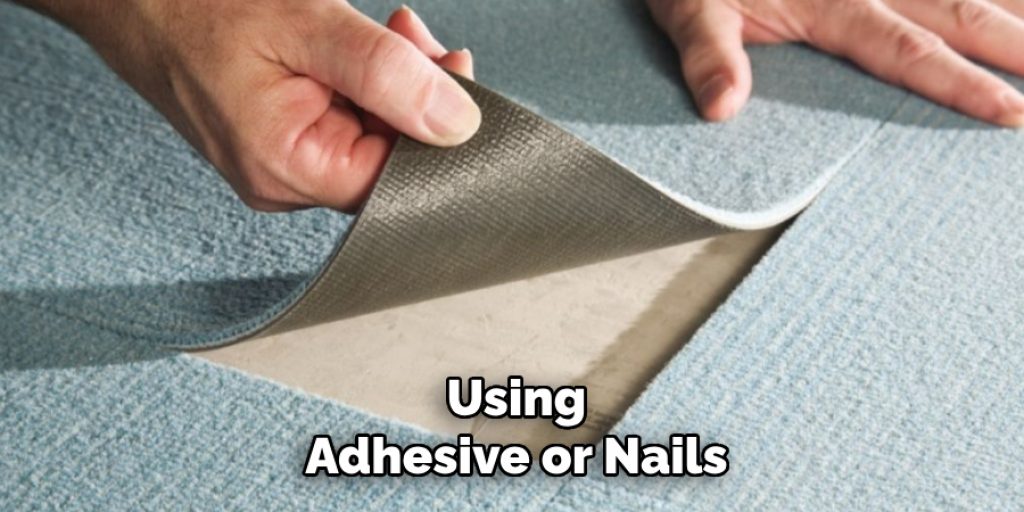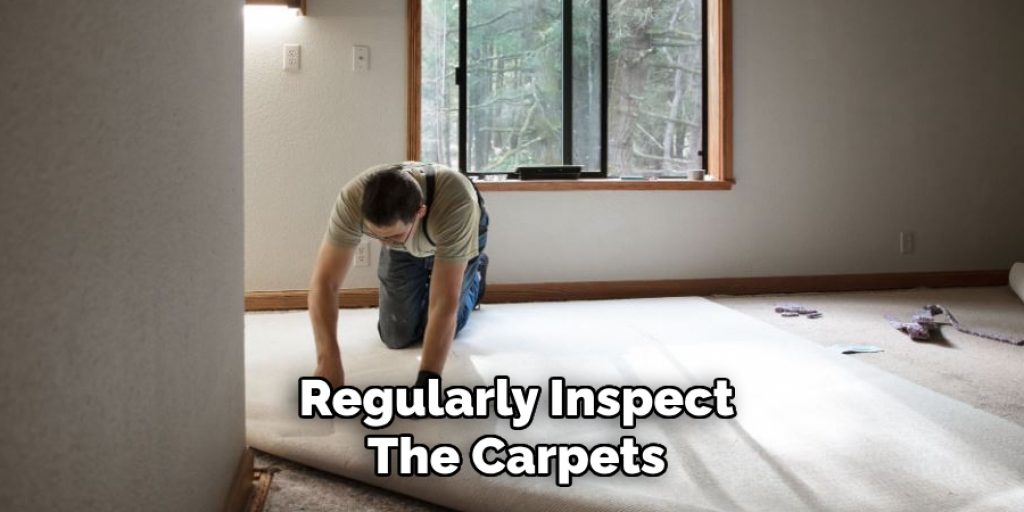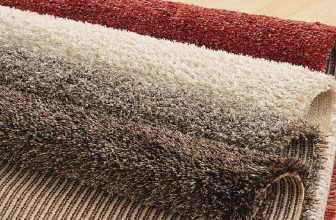How to Stop Carpet Fraying
Carpet fraying is a common issue that occurs when the fibers at the edges or seams of a carpet begin to unravel, leading to an unsightly appearance and decreased longevity. Several factors contribute to fraying, including natural wear and tear, improper installation techniques, and exposure to moisture. Addressing fraying promptly is essential not only to maintain the aesthetic appeal of your carpet but also to prolong its life.

This article will explore various methods and solutions on how to stop carpet fraying, ranging from immediate fixes to long-term preventive measures. Whether you’re dealing with minor fraying or more significant damage, our comprehensive guide will provide you with the necessary information to restore your carpet’s integrity and beauty.
Understanding Carpet Fraying
Carpet fraying refers to unraveling carpet fibers, typically occurring at the edges or seams, which can lead to more severe damage if left unaddressed. Common causes include wear and tear from foot traffic, incorrect installation practices that may compromise the carpet’s structure, and moisture exposure that can weaken fibers.
Various types of carpets have different susceptibilities to fraying; for instance, loop carpets may be more prone to fraying due to their construction. Understanding these factors is crucial for homeowners to take preventive measures and address issues before they escalate into significant problems. In essence, recognizing the signs and causes of carpet fraying is the first step toward maintaining a beautiful and durable carpet.
How to Stop Carpet Fraying: Immediate Solutions for Carpet Fraying
1.Using Carpet Tape
Carpet tape is a simple and effective solution to secure frayed edges and prevent further damage. To apply carpet tape, ensure the area is clean and dry; remove any dust or debris from the frayed edges. Next, cut a piece of tape to cover the frayed section and carefully place it along the edge, ensuring it adheres firmly to the carpet and the floor beneath. Press down along the entire length of the tape to secure it well.
For optimal results, consider using a double-sided tape designed specifically for carpets, as it provides a stronger bond. After application, avoid heavy foot traffic on the repaired area for a few hours to allow the tape to set properly and achieve maximum adhesion.

2.Applying Carpet Binding
Carpet binding is another excellent method for addressing fraying. This technique involves applying a binding tape or fabric around the frayed edges to create a clean, finished look and prevent further unraveling. Select a binding tape that matches or complements your carpet for the best aesthetic result.
To apply the binding, align it with the frayed edge and secure it using a sewing machine or fabric glue, ensuring it is tight enough to hold the carpet fibers in place. Be sure to sew or glue evenly to create a uniform appearance. Choosing the right color and type of binding tape is crucial; opt for durable options that resist wear and blend seamlessly with your carpet design for enhanced longevity and visual appeal.
How to Stop Carpet Fraying: Long-Term Solutions for Carpet Fraying
1.Professional Carpet Repair
When fraying issues escalate beyond simple home remedies, it’s advisable to consider professional carpet repair. Common situations warranting professional assistance include extensive fraying, damage caused by pet accidents, or improper installation that might require expert intervention.
Professionals often employ methods such as patching, re-stretching, or replacing sections of carpet to restore its original look and function. While costs can vary, investing in professional repair can save you from the expense of premature carpet replacement and ensure quality results that maintain your carpet’s integrity.
2.Reinforcing Edges with Trim or Molding
Installing trim or molding around carpet edges is a proactive and aesthetically pleasing way to prevent fraying. To begin, measure the perimeter of the carpet where you want to install the trim, ensuring it fits snugly against the edge. Use a saw to cut the trim to the appropriate lengths. After preparing the pieces, attach them using adhesive or nails, ensuring they are aligned properly with the carpet’s edge to create a seamless transition.

When selecting materials, choose durable options such as wood or composite that can withstand wear. Additionally, consider painting or staining the trim to match the decor of the room, combining functionality with style while safeguarding your carpet from future fraying.
Preventative Measures
Regular Maintenance and Cleaning
Maintaining your carpet through regular cleaning and vacuuming is essential to prevent excessive wear and fraying. Vacuuming at least once a week helps remove dirt, dust, and debris that can grind into the carpet fibers, leading to premature damage. Pay special attention to the edges and seams where fraying is most likely to occur.
For cleaning, use a mild carpet cleaner that is safe for your specific carpet type, avoiding harsh chemicals that can weaken fibers. Having your carpets professionally cleaned at least once a year is also advisable. Professional cleaning can remove deep-seated grime and rejuvenate the carpet’s appearance, thereby extending its life.
Proper Installation and Care
Proper installation is crucial in preventing carpet fraying. When installing carpet, ensure that the seams are aligned correctly and secured properly to avoid gaps where fraying can begin. Hiring a qualified carpet installer who understands the importance of tight seams and the proper stretch of the carpet can make a significant difference. Homeowners should also regularly inspect their carpets, checking for any signs of wear or fraying.

Addressing these issues promptly can prevent them from worsening. Additionally, educate yourself on common installation mistakes—like inadequate stretching or allowing moisture retention—which can compromise the carpet’s integrity.
DIY Tips for Fixing Minor Fraying Issues
Using Fabric Glue or Adhesive
Fabric glue is a simple and effective solution for minor fraying. To apply, gently lift the frayed fibers and apply a small amount of fabric glue. Press the fibers into the glue and ensure they are secured in place. Allow the glue to dry for the recommended time specified on the product label, ideally in a position where it won’t be disturbed. Proper drying is crucial for maximum effectiveness.
Sewing or Stitching Edges
Consider sewing or stitching the frayed edges if you prefer a more durable repair. Hand-stitching or machine-stitching can reinforce the fabric and provide a long-lasting solution. Use a heavy-duty thread that matches your carpet for the best appearance. When stitching, follow close to the original seam to secure the fibers without damaging them. Whether you choose to hand-stitch or use a sewing machine, ensure that your stitches are tight enough to hold the frayed fibers in place while allowing for some flexibility.
Frequently Asked Questions (FAQs)
What Causes Carpet Fraying?
Carpet fraying can be caused by various factors, including heavy foot traffic, improper installation, frequent pulling or tugging of the fibers, and wear over time. Additionally, exposure to moisture or cleaning with abrasive products can weaken carpet fibers and lead to fraying.
How Can I Prevent My Carpet from Fraying?
To prevent fraying, ensure proper installation with tight seams and adequate stretching. Regular maintenance and cleaning, avoiding excessive moisture, and using trim or molding around the edges can also help. Educating yourself on common carpet care practices will further extend its life.
Can I Fix Fraying Myself?
Yes, minor fraying can often be repaired using DIY methods such as fabric glue, sewing, or applying binding tape. Professional repair may be necessary for more extensive damage to ensure a lasting solution.

How Often Should I Vacuum My Carpet to Prevent Fraying?
Vacuum your carpet at least once a week. This helps remove dirt and debris that can wear down the fibers and contribute to fraying, particularly around the edges.
When Should I Consider Hiring a Professional for Carpet Repair?
You should consider hiring a professional if you notice extensive fraying, significant damage from pets, or if the carpet is poorly installed. Professionals can provide specialized services such as repair, patching, or complete repairing, patching, or replacing damaged areas to restore your carpet effectively. Overall, investing in regular maintenance and addressing fraying issues promptly can save you time and money and reduce the hassle of replacing your carpet. With proper care and attention, your carpet can maintain its original appearance and function for many years to come.
So don’t wait until it’s too late – start protecting your carpet today! Consider implementing some of these preventative measures to keep it looking like new for as long as possible. And remember, when in doubt, consult a professional for their expert advice and services. Your carpet deserves the best care to ensure its longevity and continued beauty in your home or business.
Conclusion
In summary, effectively addressing and preventing carpet fraying involves a range of methods, from DIY fixes like fabric glue and sewing to more involved approaches such as professional repairs and the installation of trim or molding. It’s important to choose the right solution based on the severity of the fraying; minor issues can often be tackled at home, while extensive damage may require expert intervention.
Regular maintenance, including cleaning and proper installation, is crucial to maintaining the quality and appearance of your carpet over time. By understanding how to stop carpet fraying, homeowners can ensure their carpets remain beautiful and functional, enhancing the comfort and aesthetics of their living spaces. Remember, proactive care is always better than reactive fixes, so keep an eye on your carpets and address any issues promptly.




